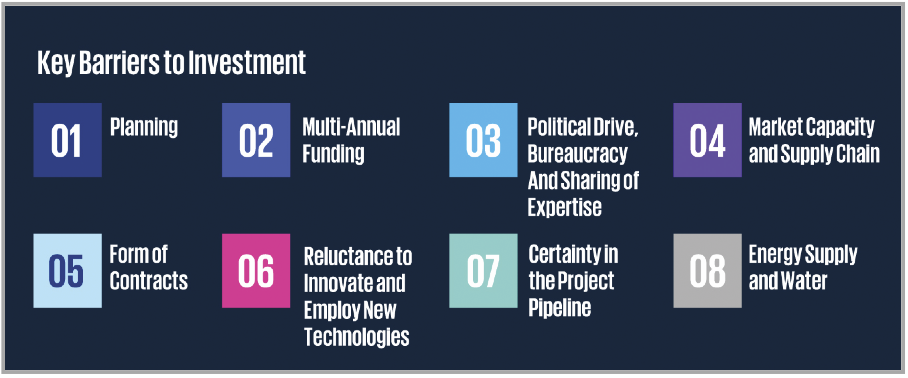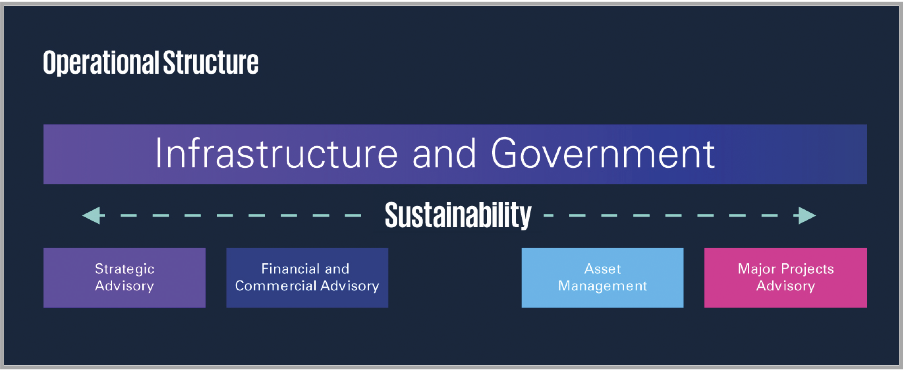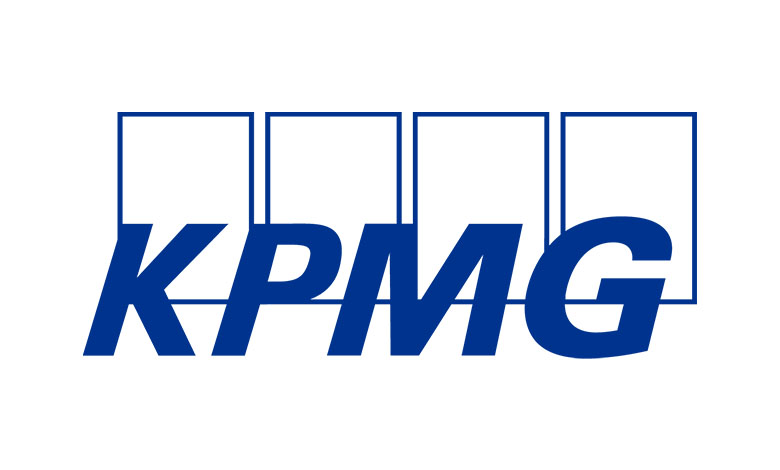Accelerating infrastructure delivery

The Programme for Government provides a significant opportunity to shift the dial in a meaningful way in delivering our key infrastructure needs and we cannot afford to miss it, write KPMG’s newly-appointed heads of infrastructure Paul O’Neill and Matthew King.
In previous issues of eolas Magazine, KPMG has written with some scepticism on accelerating project delivery, breaking down silos, and finally getting ahead of the curve in improving how we programme and deliver key infrastructure. Why? Because it feels like year in, year out, the same challenges are presented with very little optimism and signs for meaningful change. So, what makes this latest Programme for Government any different?
Shifting the dial
This Programme for Government outlines a commitment to deliver a clear and credible macroeconomic and fiscal framework, prioritising continued economic resilience, through investment in capital spending and funds for future needs. It recognises that delivery of essential infrastructure is a key driver in attracting and retaining investment in Ireland, growing our economy, fostering regional development, delivering on our housing targets and achieving our ambitious climate goals. While some may argue that these are ‘soundbites’, the programme outlines several measures the Government plans to implement to support these statements, including:
• prioritising an early review of the National Development Plan;
• reviewing and reforming the prioritisation process of capital projects in key agencies;
• creating a dedicated Infrastructure Division in a re-named Department of Public Expenditure, Infrastructure, Public Service Reform and Digitalisation with the division being led by a Deputy Secretary General;
• tasking the new division to work with stakeholders to advise Government on strategic project selection and prioritisation, aligned with national priorities and making maximum use of resources;
• ensuring the division develops a sustainable pipeline of projects, allowing for continued investment over the medium to long-term to deliver upon the ambition of the National Development Plan;
• creating a Cabinet Committee on Infrastructure, chaired by the Taoiseach, to drive infrastructural delivery, accountability and value for money; and
• broadening the remit of the National Development Finance Agency (NDFA) in the National Treasury Management Agency to provide expert advice for major infrastructure delivery as required by sponsoring departments or agencies.
Challenges and opportunities
For some time now, we have been arguing that the lack of central expertise to drive and deliver public infrastructure, and to hold both public and private sectors accountable, is a major challenge in enabling the step-change needed to accelerate project and programme delivery. Strong political support and accountability are imperative for changing mindsets and the trajectory of our infrastructure programme.
The measures identified in the Programme for Government, including the creation of a new infrastructure division and the expansion of the NDFA’s remit, signal that government is listening and positively responding to the call for what needs to be done to shift the dial. The commitment to develop a sustainable pipeline of projects is welcomed and will enable continued investment over the medium to long term, ensuring the ambitions of the National Development Plan are realised.
In order to advance enablers that will improve quality of life and drive our economy, we need to derisk infrastructure funding and prioritisation from changes in the political regime of the time.
However, to truly instill confidence in the market, we must ensure certainty on the programme of delivery. For too long now the market has lacked confidence in the reality of Project Ireland 2040 and the feasibility of its project delivery timelines. We have witnessed a decline in the depth of our own contracting market since the recession, further worsened by Covid-19. We are competing, especially for the mega projects, against other more attractive overseas markets that offer different contract forms and often provide support for the substantial costs incurred during the bidding process, which can amount to millions. To rekindle market interest, we should actively promote our planned 10+ year infrastructure spending programme, both domestically and internationally.
Importance of funding certainty
As an important aside, many procuring authorities are hampered in their forward planning due to the uncertainty of funding. Infrastructure delivery will always span multiple election cycles. In order to advance enablers that will improve quality of life and drive our economy, we need to derisk infrastructure funding and prioritisation from changes in the political regime of the time. The Programme for Government includes multiple cross-sectoral references to multi-annual funding commitments being locked in, including areas such as housing, healthcare, rail, roads and student accommodation. If this is followed through on, it will be a real game changer.
Key commitments in the Programme for Government
As well as these promising measures to enhance how critical infrastructure is funded and delivered, it should also be noted that the Programme for Government has a number of key commitments on what will be delivered.
The target to deliver 300,000 homes by 2030 end will be widely welcomed, as will the commitment on additional capital support to enable Uisce Éireann to support this target. It is also good to see the proposal to set up a Modern Methods of Construction Innovation fund to support innovation in housing delivery.
It would be bereft not to mention climate ambitions and there are number of important commitments and statements of policy included. There are commitments on renewable energy generation and key measures such as prioritising the Designated Maritime Area Plans for offshore.There is support to scale up investment in the electricity system and commitments of support for greater electrical interconnectivity. It is good to see that there is recognition of the role that Data Centres can play in the decarbonisation of our energy system as well as wider economic value. Other decarbonisation commitments include support for district heating and the acceleration of projects to encourage modal shift in transport.
Conclusion
Overall, the Programme for Government presents a promising and ambitious roadmap for addressing Ireland’s critical infrastructure needs. By prioritising a clear and credible macroeconomic and fiscal framework, and committing to substantial investments in capital spending, the Government is taking significant steps to enhance economic resilience and foster regional development. The outlined measures, such as the creation of a dedicated Infrastructure Division and the expansion of the NDFA’s remit, demonstrate a proactive approach to overcoming longstanding challenges in project delivery and market confidence.
The success of these initiatives hinges on effective implementation and sustained political support. Ensuring funding certainty and insulating infrastructure priorities from political changes are crucial for maintaining momentum and delivering on our critical infrastructure needs. The ambition is to be applauded but the proof will be in the ability and speed of implementation. Infrastructure has never had so much profile as it had in this election. Let us hope it lives up to the hype.
How KPMG is responding
At KPMG we collaborate with various sectors and stakeholders to address challenges with infrastructure delivery and find better ways of working. As the market evolves, and in alignment with the Programme for Government, we have expanded our services to ensure we provide a whole project life cycle offering to clients that is credible, of value, and ensures a comprehensive range of supports are available to assist in navigating complexities and achieving policy objectives.
Contact us for expert guidance and support for your infrastructure project needs:
Paul O’Neill
Head of Infrastructure Strategy and Commercial Advisory
E: paul.oneill@kpmg.ie
W: www.kpmg.ie
Matthew King
Head of Asset Management and Major Projects Advisory
E: matthew.king@kpmg.ie
W: www.kpmg.ie









